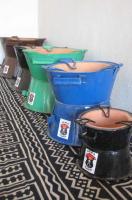Hello stoves community,
At ETHOS 2009 we held a panel on stove safety, bringing in viewpoints from corporate standards development, national standards certification, and small to medium scale developers. The team led by Nathan Johnson (Iowa State University) included Crispin Pemberton-Pigott (New Dawn Engineering), Casper Thijssen (Philips), and Karabi Dutta.
The panel gave a comparative analysis of how different stove industries (multinational corporations, medium-scale companies, NGOs, small developers, etc.) addressed fundamental stove safety questions. These topics included:
a) applicability of standards and regulation;
b) incentives and benefits
c) facilities and equipment availability
d) cost vs. benefit
e) resulting action
We determined that each type of industry has a different perspective that influences their path or actions towards a safer stove. And that all sub-industries may not produce safer stoves given the same incentive mechanisms or policies. As such more than one path to safety may be needed to reach the greatest amount of end-users (and producers). The panel ended the discussion with an overview present work in stove safety with recommendations for next steps.
Please view the attached file for more details. I will be leading a group in 2009 to work on the following: assemble database of injury data, b) analyze incentive mechanisms, cost/ benefit, c) development of lab testing procedures for different stove categories, d) publication of findings/ results, and e) look for partnerships with international agencies to support safer stove design and production.
Please contact me if you have any questions. There will be more updates to follow. Best,
Nathan Johnson
atlas@iastate.edu
PhD Candidate, Mechanical Engineering, International Development
Iowa State University



